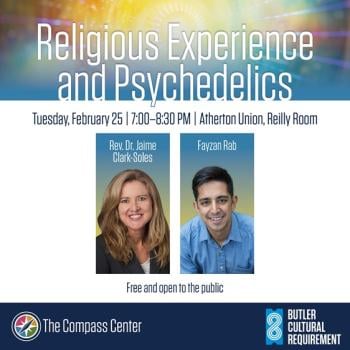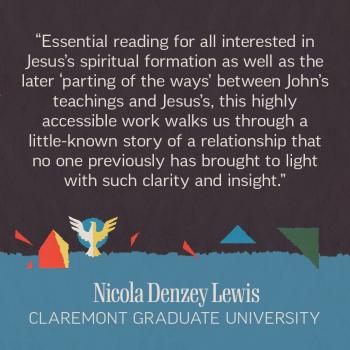I am grateful to Patheos for the privilege of being part of its book club discussion of Tim Stafford’s recent book, Miracles: A Journalist Looks at Modern Day Experiences of God’s Power
Miracles: A Journalist Looks at Modern Day Experiences of God’s Power
(Minneapolis: Bethany House, 2012). The book offers the perspective of a Christian journalist on the subject – not primarily seeking to collect miracle stories and to assess the evidence for them, but rather the author aims to offer “a guide to miracles – how to think about them, pray for them, respond to them (or respond to their absence)” (p.23). Stafford addresses issues like whether miracles are commonplace, whether they are incompatible with natural explanations, and whether scientists can believe in them. I am not entirely satisfied with his answers or treatment of the topic in places, as I will discuss further below, but the book certainly provides a good opportunity not only for its intended audience (those caught between a Christian conviction that miracles can and should happen and common sense or scientific skepticism), but also those closer to the edges of either skepticism or believing miracles to be abundant, to reflect on the topic. But the author is up front that the book is not aimed at persuading skeptics, and in the process he explains why that is the case, and discusses whether that ought to be the case, in an interesting manner.
Stafford’s book focuses on, and returns time and again, to a particular experience with which the author has direct contact, of a young man resigned to life in a wheelchair plagued by chronic debilitating foot pain, who when attending a church while traveling and receiving prayer for healing, instantly and thus far permanently recovered.
Stafford takes completely seriously the possibility of psychosomatic healing. Indeed, he works hard at breaking down the distinction between natural events in which healing occurs by ordinary processes, and more startling ones in which a divine intervention is then posited. Stafford argues that God is present in all healing, and considers that even if one were to be able to record an astounding miracle and see in detail what is taking place, one would still see natural processes at work.
As I considered this way of approaching things, I found it helpful, but it seems to me that it ultimately leads to pantheism or panentheism – and I do not say that as a criticism! If one simply says that God is at work in everything the universe does, without anything beyond natural processes being visible, then either that identifies the universe with God, or it views the universe as rather akin to God’s body, with natural and deliberate and unusual activities taking place in a manner that does not involve intervention from outside. Adopting the latter sort of theological model and imagery is a step that numerous Christian theologians have taken in recent decades, and one of its key advantages is precisely that it avoids either simply driving God back in a deistic fashion as science progresses, or viewing God as intervening in ever-closing gaps (see esp. pp.57-59, 71, 74-75, 78, 175, 177, 200-201).
I see no clear signs that Stafford has explored these panentheistic theological models, and indeed some things that suggest that his thinking about God is much more traditional. But I would encourage him, and those who find his way of thinking about healing, nature and science helpful, to consider what it might mean to take those insights completely seriously in their theological reflection, and how it might lead to thinking about God differently than many of our forebears and contemporaries did and continue to do.
Stafford says that it is appropriate to be skeptical, and to not simply believe all accounts of miracles that pass our way. It is clear that not all stories we hear about the miraculous are true, and Stafford emphasizes that this doesn’t necessarily mean that none of them are, while at the same time pointing out the harm that is done to the Christian faith when unverified gossip – even miracle gossip – is passed on uncritically.
In theory, Stafford recognizes that this same principle can and should be applied to the New Testament (p.116). In practice, it seems that Stafford is far too credulous, not recognizing that in many instances we simply do not have the sorts of first-hand accounts that he himself looks for in the present day. While he says that “The Gospels don’t read like legends; they sound like factual accounts” (p.116), that is certainly true of some of the stories, and today’s historians are much more open to the possibility of people experiencing healing in connection with Jesus’ activity than was the case a century ago, but it is not true of all of them, and in some instances we can trace trajectories within the New Testament as miracle stories become increasingly spectacular from the first telling to the later ones, much as we can see Goliath get bigger across time in our manuscripts of the Jewish Scriptures. There is no reason to think that in the writing of Gospels, and in the telling of stories about miracles prior to their being written down, the same sorts of developments and exaggerations did not occur as we witness today. There may well have been, then as now, cases like some that Stafford mentions in his book, where people were declared healed and the story began to circulate with no follow up, which might have indicated that the cure was not permanent.
But at any rate, as I emphasize in my book The Burial of Jesus: What Does History Have to Do with Faith?, a historian simply cannot take an account of the extremely unlikely from the distant past and declare that it most likely happened, when (again, as Stafford acknowledges) such an occurrence is by definition unlikely. The most a historian can say in most instances is what Stafford himself says in many: I have no way of determining exactly what happened, or how.
Stafford does not refrain from saying things at times that will be bound to shock and startle his conservative Christian readers – for instance, when he writes, “The inventor of penicillin healed a thousand times as many people as Jesus ever did” (p.100). A question I would have liked to see addressed is why Stafford thinks that Jesus was not sent into the world to offer an explanation of antibiotics and how to avoid and cure illnesses, rather than to heal in rather haphazard, subdued, and smaller-scale ways. Just as reflection on the nature of healing can lead to appropriate revisions of one’s view of God and the God-world relationship, so too reflection on what Jesus did and did not do compared to modern medicine may provide helpful correctives to Christologies which essentially view Jesus as an other-worldly being who inexplicably withholds much-needed information, leading us to understand Jesus as a real human being whose healings represent a person doing what it was possible to do in his time and place in history, because he could do no more.
In spite of the above criticisms, it seems to me that Stafford makes an important positive contribution to Christian discussion of miracles. Everyone should be able to agree that people are sometimes healed in surprising ways. Sometimes prayer and other actions that express religious faith seem to facilitate that – although emphatically not always nor even in the majority of cases. It seems that there are key points that skeptics and believers (and those who are both) can agree on. We can agree likewise that we do not fully understand the ways in which healing occurs in those instances where it is not due to medical intervention. And even the spectacular cases need not be viewed as fundamentally different in kind from more common instances of healing, even though the former may deserve to be set apart linguistically as “wonders” or “miracles.” The question of whether to see healing as having to do with God, and if so in what sense, is a matter of how to interpret the same events, which we all may or may not witness with our own eyes. It is not – or should not be – a division between those who believe certain things happen and those who do not. Amputated limbs do not grow back, and those churches which practice faith healing may hand crutches and wheelchairs upon the walls, from those who entered with them and left no longer needing them, but prosthetic limbs are notably absent, and Stafford acknowledges this as simply an observable fact which one must accept, even if one doesn’t know exactly how to make sense of it within the framework of one’s worldview (p.176). Although there is a difference between people in terms of where they place themselves on a spectrum of skepticism and credulity, that spectrum cuts across the division between religious believers and those who are not. But perhaps a more fundamental division relates to how people interpret these events, and how they express their gratitude for them.
Stafford’s book is a helpful counter, from an Evangelical perspective, to a variety of stances that people have adopted within that stream of Christianity as well as in others, often without much thought, towards the subject of miracles, and towards Christian denominations other than their own which tend to view the topic differently. He does not pretend that the kinds of claims that one encounters in Christian circles are not made in others, in the hope of being able to make an apologetic point in favor of his own faith tradition at the expense of others. He summarizes his key points in a helpful list of twenty affirmations (pp.199-201). And he recognizes that healing ministries can make mistakes and can do things that cause serious harm, as in one instance of a schizophrenic being declared healed, with no account being taken of the penchant for delusion that disorder brings with it (p.211). And so, while I myself view several matters differently than Stafford does, I can still recommend his book as offering a much-needed corrective to sloppy and unhelpful thinking about miracles that tends to predominate in Evangelical circles. And I look forward to being part of further discussions about the relationship between faith and science, and about the ways we think about God, the natural world, and healing, in conversations that Stafford’s book helps to generate.













